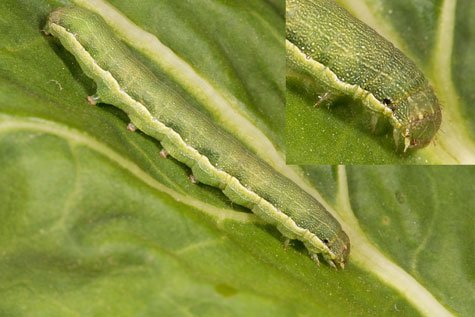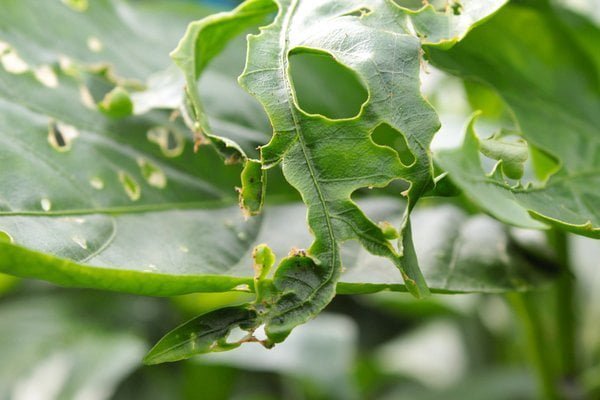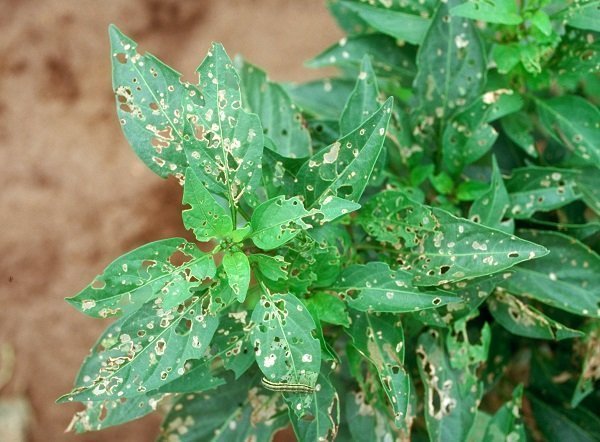Table of contents of the article
Toggle
Greenworms are pests that attack sweet pepper plants, causing significant damage to the leaves and fruits. This article from the “WORLD OF PLANTS” website discusses ways to identify the infestation and methods of effective control.
Causes of green worms on sweet pepper plants
- Disease name: green worms on sweet pepper plants
- Scientific name: Spodoptera exigua
- Type of disease: insect
- Disease family: Lepidoptera
Greenworms are mobile, as one larvae can attack several sweet pepper plants in a row. Their life cycle takes about a month to complete in warm weather. They also die due to severe frosts in the fall.
Symptoms of green worms on sweet pepper plants
The older worms attack the upper part of the sweet pepper plant, feeding mainly on the growing tips. They produce large holes in the leaf and sometimes strip the leaf up to the middle of the rib. The fruits and buds are also attacked.
Development cycle of green worm disease on sweet pepper plants
In late spring, females begin laying eggs in groups on the leaves of sweet pepper plants. The eggs hatch within a few days, and the young larvae begin feeding while they are still clustered on the plant. Greenworm larvae mature within two to three weeks.

Suitable conditions for the spread of green worm disease on sweet pepper plants
These worms are active in the summer, especially during the months of August and September. They need high temperatures in order for their eggs to hatch, and they also concentrate on harmful plants.
Losses resulting from the spread of green worm disease on sweet pepper plants
Green worms cause widespread damage to the growth of the crop, due to the presence of a large number of larvae that attack the leaves and stems and also spread to the fruits and feed on them, causing losses in the quantity and quality of the crop.

Controlling green worm disease on sweet pepper plants
- Foliar spraying with 5% cottonseed oil helps control both eggs and young larvae.
- Using pheromones to disrupt mating and prevent reproduction.
- Use of pesticides. You should avoid using the same active ingredient every time to prevent it from acquiring resistance to these pesticides.
- Getting rid of harmful plants around the field.
Preventive measures for green worm disease on sweet pepper plants
- Regular monitoring of the leaves and fruits of the sweet pepper crop.
- Good fertilization of the plant.
- Cleaning the field continuously to avoid worms infecting the crop.
- Good irrigation for the plant, especially in the summer.
In conclusion, we would like to note that we, at the world of plants website, offer you all the necessary services in the world of plants, we provide all farmers and those interested in plants with three main services::-
- Artificial intelligence consulting service to help you identify diseases that affect plants and how to deal with them.
- Blog about plants, plant diseases and care of various crops ... You are currently browsing one of her articles right now.
- An application that provides agricultural consultations to clients, as well as a service for imaging diseases and knowing their treatment for free – Click to download the Android version from Google Play Store، Click to download the IOS version from the Apple App Store.




